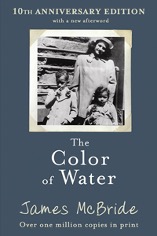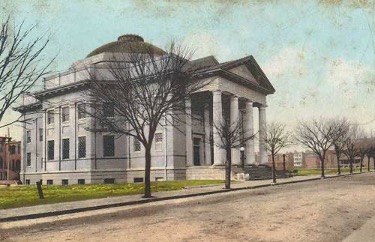May marks the celebration of Jewish American Heritage Month, a commemoration established by both the Federal Government and the state of Virginia. This year, UVA Library’s Rose Oliveira-Abbey and Carla Arton delved into the rich local history of Jewish Americans in Virginia, a legacy dating back to 1585. While Jewish communities have been established throughout the state, our resources primarily highlight the vibrant narratives from Northern Virginia, Richmond, Charlottesville, and Southeast Virginia. This exploration is presented through three distinct reader experiences: to discover in print, online, or in person.
Throughout these narratives, recurring themes emerge, including the values of charity and justice (tzedakah), community service (tikkun olam, or repairing the world), a dedication to education and historical preservation, experiences of antisemitism and immigration, the challenges of assimilation, and the enduring efforts to build and sustain community and culture. Central to this local history is the acknowledgment that these achievements owe much to foundational principles of Thomas Jefferson’s Virginia Statue for Religious Freedom and the protection afforded by the United States’ First Amendment. For those interested in a broader perspective, scroll to the bottom for a list of documentaries that illuminate the wider Jewish American experience.
Discover in print
Charlottesville
 “Saving Monticello: The Levy Family’s Epic Quest to Rescue the House that Jefferson Built” by Mark Leepson (UVA Press, 2003)
“Saving Monticello: The Levy Family’s Epic Quest to Rescue the House that Jefferson Built” by Mark Leepson (UVA Press, 2003)
The author follows the efforts of the Levy family across generations to preserve Thomas Jefferson’s home, Monticello, which was on a path to being lost to time. This story reflects Jewish American values and themes around service and national pride, education and historical preservation, and struggles with assimilation and antisemitism.

“America’s First Jewish Professor: James Joseph Sylvester at the University of Virginia” by Lewis S. Feuer (American Jewish Archives, 1984)
This journal article, held in Special Collections (or scanned here), tries to set the record straight about the first secular Jewish professor appointed in the United States in 1841. A British mathematician, Sylvester was invited to teach at UVA and experienced a mixture of excitement and disapproval over his appointment. His tenure was short-lived at only four months, when an altercation with a troublesome student prompted him to resign. He went on to teach at other great institutions, ending up as the Savilian Chair of Geometry at Oxford University. Incidentally, UVA didn’t hire another Jewish faculty member for another 80 years, when they hired two during the 1920s.
“A Brief History of the Jewish Community in Charlottesville and Albemarle” (Special publication, 1982)
This is short centennial publication by Congregation Beth Israel, celebrating the Jewish community’s establishment and history in Charlottesville.
Richmond
“The Center: From Generation to Generation” (Dementi Milestone Publishing, 2017)
This publication from the Carol and Marcus Weinstein Jewish Community Center in Richmond, Virginia, celebrates their first 70 years. It highlights various building and programming expansions and each generation’s impact on the local community through their dedication to responsibility, inclusion (they were the only non-segregated health facility in Richmond), education and excellence. They’ve grown to provide a year-round preschool with inclusion services for 40% of students; summer camps; health and fitness classes; a theater & arts program; and multiple charity opportunities, such as the donations to the local food pantry.
“Richmond’s Jewry, 1769-1976: Shabbat in Shockoe” by Myron Berman (UVA Press, 1979)
An historical publication by the University of Virginia Press and the Jewish Community Federation of Richmond in 1979 on the Jewish communities of Richmond, Virginia, between 1769 and 1976.
Northern Virginia
“Jewish Communities of Northern Virginia” by Susan Dilles and Shawn Dilles (Arcadia Publishing, 2022)
Published as part of the “Images of America” series, this book follows 175 years of Jewish communities forming and fluctuating in Northern Virginia, starting in the 1850s. It discusses daily life; faith-based practices and synagogues; the various industries that Jews worked in, including contributions to the federal government; waves of immigration; and how the some of the families resettled further into Virginia over time.
Suffolk
 “The Color of Water: A Black Man’s Tribute to His White Mother” by James McBride (Riverhead Books, 1996)
“The Color of Water: A Black Man’s Tribute to His White Mother” by James McBride (Riverhead Books, 1996)
This powerful memoir tells the story of James McBride and his mother, Ruth McBride Jordan, born Rachel Shilsky. The narrative bounces between two viewpoints: one of James, who tells the story of his childhood, growing up as one of twelve siblings in a mixed-race family in New York City. The other is of Ruth, whose past she only reluctantly shares with her son as an adult. She talks about her life as a Jewish immigrant in Suffolk, Virginia, where her family settled in the 1930s. She describes The antisemitism she faced, and the suffocating household presided over by her father, an itinerant Orthodox Rabbi, who was abusive and racist. It traces her move to New York, falling in love with Andrew McBride, a Black man, and the schism that created in her family. The book is a meditation on race, identity, love, and what family means.
Virginia
“Chapters on the Jews of Virginia - Chapters on the Jews of Virginia, 1658-1900” by Louis Ginsberg (1969)
Published in 1969 by Cavalier Press in Richmond, this book gives a wide history of the various Jewish communities within Virginia, covering from 1668 to 1900.
Discover online
Encyclopedia of Southern Jewish Communities – Virginia
Created by Goldring/Woldenberg Institute of Southern Jewish Life (ISJL), this website has an interactive of Jewish communities in the South. The interactive map allows you to explore different communities throughout Virginia, providing historical overviews, stories of Jewish life, and the state of the Jewish communities today. A fantastic way to learn about the many communities located all around the state.
Virginia Chronicle – Library of Virginia
An excellent primary source database offered by the Library of Virginia of historical newspapers from across the state and nation.
Jewish South – 1893-1899
A weekly newspaper published in from 1893 to 1899, it was “a journal devoted to the interests of Judaism,” that covered Richmond also neighboring counties. It reported on local news in congregations, lodges, and societies as well as published sermons, essays, and articles explaining, discussing or commenting on the lessons and doctrines of Judaism. It is a fascinating peek into Jewish life in Virginia at the end of the 19th century.
Virginia-Carolina Jewish Messenger – 1933-1938
The tagline reads “The only Anglo-Jewish newspaper published in Virginia and the Carolinas.” While it ceased publication in 1938, it provides an interesting glimpse into both local Jewish life in the South as well as documenting the rise and impact of Nazism and an increase in Zionism as a result.
To Seek the Peace of the City: Jewish Life in Charlottesville
A fantastic online exhibit from the early 2000s, created in collaboration of the Jewish Arts and Culture Taskforce of the Hillel Jewish Center at the University of Virginia, in partnership with Congregation Beth Israel of Charlottesville and the Albemarle County Historical Society. The website explores Jewish life in Charlottesville from its very first Jewish settlers in Albemarle County in 1757 up to the middle of the 20th century. It provides a detailed look at the development of Jewish life in Charlottesville, as well as the student and faculty experience at UVA.
Discover in person
Downtown Charlottesville Jewish History Walking Tour – Albemarle Charlottesville Historical Society
The Historical Society will offer two tours this spring (May 9 & June 9) with UVA Professor Emerita Phyllis Leffler, who co-published the UVA online exhibit listed above and was the recent President of the Southern Jewish Historical Society. Walk the Downtown Mall and learn about the local Jewish community and what has been happening since the 2001 exhibit was published.
Virginia Holocaust Museum – Richmond
The VHM highlights stories from the Holocaust and personal stories of survivors who fled to Virginia to escape the Nazis. As part of their permanent exhibits, they feature the “Jewish American Hall of Fame,” highlighting over 50 Jewish Americans and the contributions they made to humanity. They also have an online collection of oral histories, biographies of Survivors in Virginia, and a virtual tour of the museum.
Congregation Beth Ahabah – Museums & Archives – Richmond

This is the oldest Jewish community in Richmond, and one of the oldest communities in the United States, originally starting in 1789 as a Sephardic orthodox synagogue (Kahal Kadosh Beth Shalome) and later combining with an Ashkenazi Reform temple in the late 1800s (Congregation Beth Ahabah). It is a beautiful building in downtown Richmond, near Virginia Commonwealth University, with Tiffany Studios stained-glass windows and a museum attached. The museum currently has four exhibits you can visit (see bulleted list below). Congregants of Beth Ahabah have long been part of the wider Richmond community, involved in the women’s voting rights movement, the local school board, and various social services. In 1871, it offered to dismantle its own school program so the city could use its rooms as the location of the first public school in Richmond.
- “Chai Lights” – 18 stories highlighting the Jewish experience in Richmond.
- “Beyond the Temple Walls: A Commitment to Community” – Highlights the longstanding commitment of the Richmond Jewish Community to service and charity (tzedakah) over two centuries, as part of the Jewish obligation to “Repair the World” or carry out Tikkun Olam.
- “Commonwealth and Community: The Jewish Experience in Virginia” - This exhibit pairs with the book of the same title and covers from the first Jew to accompany Sir Walter Raleigh on his expeditions in Virginia, metallurgist Joachim Gans, to the founding of the State of Israel and its impact on Richmond Jews.
- “Count Me In! Richmond’s Jews Respond to WWI” – This exhibit commemorates the 234 Jewish men that served in World War I from Richmond, how they served, and how the Jewish community at home supported the war.
Jewish Museum and Cultural Center – Portsmouth, Virginia – Hampton Roads and Tidewater Communities
Next time you’re in the Tidewater area, check out this museum connected to Chevra Thelim Synagogue, once a thriving orthodox community. It highlights the stories of Jewish immigrants during World War II to the area, and how they lived as refugees and naturalized American citizens. The building and museum are now registered on the National Trust for Historic Preservation and is on the Virginia Historic Register.
Documentaries on the broader Jewish American experience
Below are some great PBS broadcast documentaries highlighting some of the themes we mentioned above but from a broader national experience. All are freely available through the Shannon Library.
The Jewish Journey: America (2018, PBS)
Follows personal stories of Jewish Americans from early immigrants & settlers, up until the 21st century.
The Jewish Americans (2008, PBS, DVD)
The US and the Holocaust (2022, PBS)
- The U.S. And the Holocaust: Episode One, the Golden Door (beginnings-1938)
- The U.S. And the Holocaust: Episode Two, Yearning to Breathe Free (1938-1942)
- The U.S. And the Holocaust: Episode Three, the Homeless, Tempest-tossed (1942 - )
GI Jews (2018, PBS)
GI Jews: Jewish Americans in World War II tells the story of the 550,000 Jewish Americans who fought in World War II. In their own words, veterans both famous and unknown bring their war experiences to life.
Jews of the Wild West (2022, Electric Yolk Media)
Explores Jewish Americans’ positive impact and contributions in shaping the American Western states. To illuminate the history it highlights specific stories, like those of Levi Strauss and Josephine Marcus, the wife of Wyatt Earp, and personal stories of contemporary Jewish Americans.
Looking for more? Go to The Jewish American Heritage Month website.
